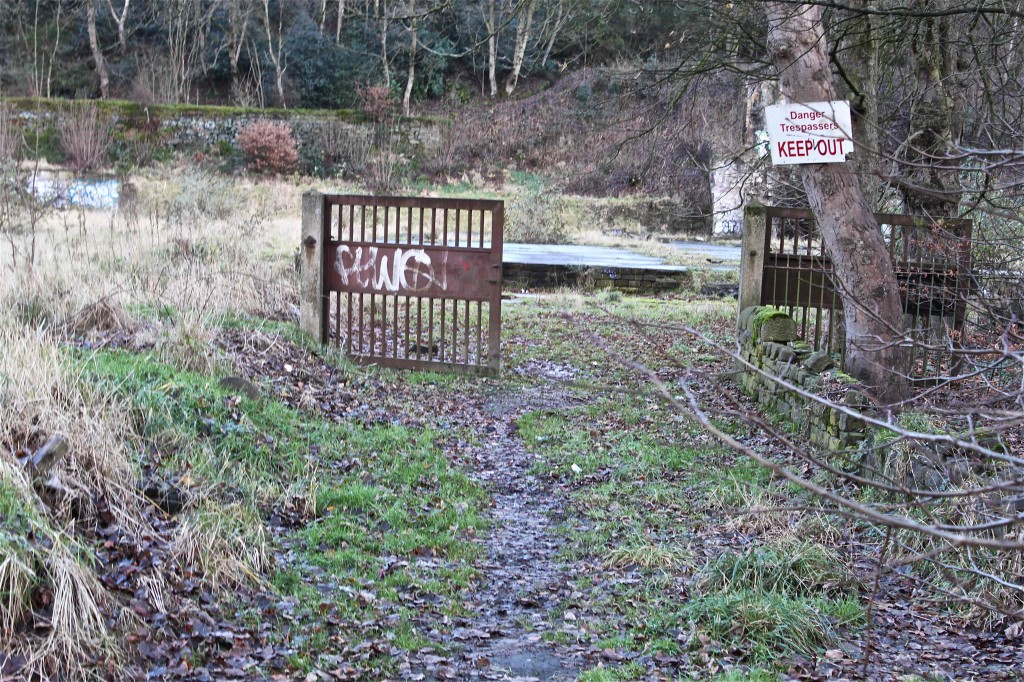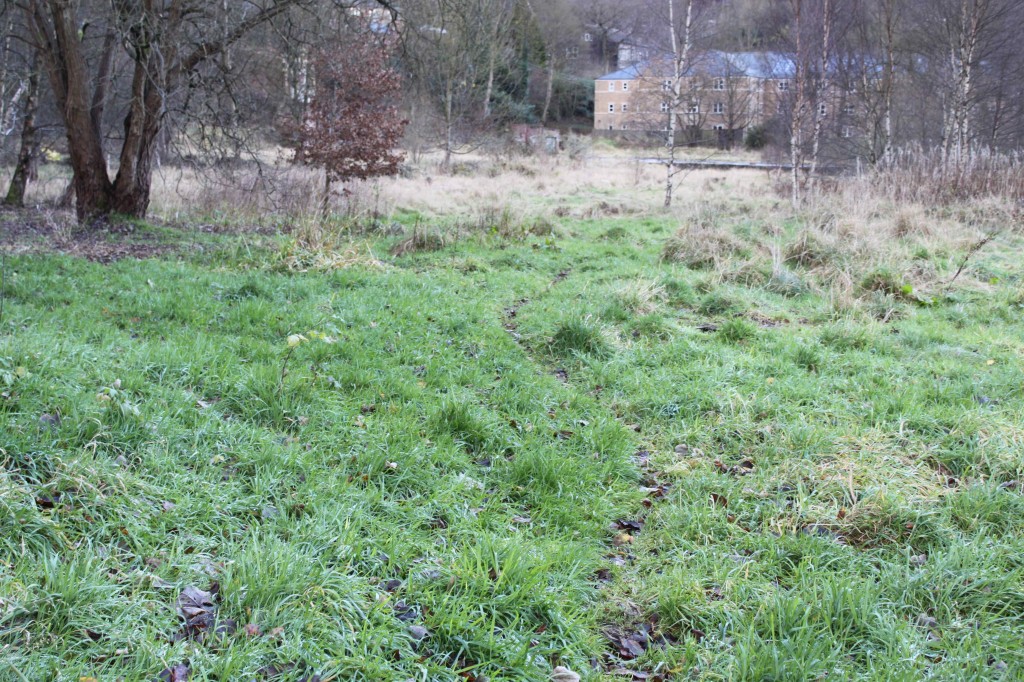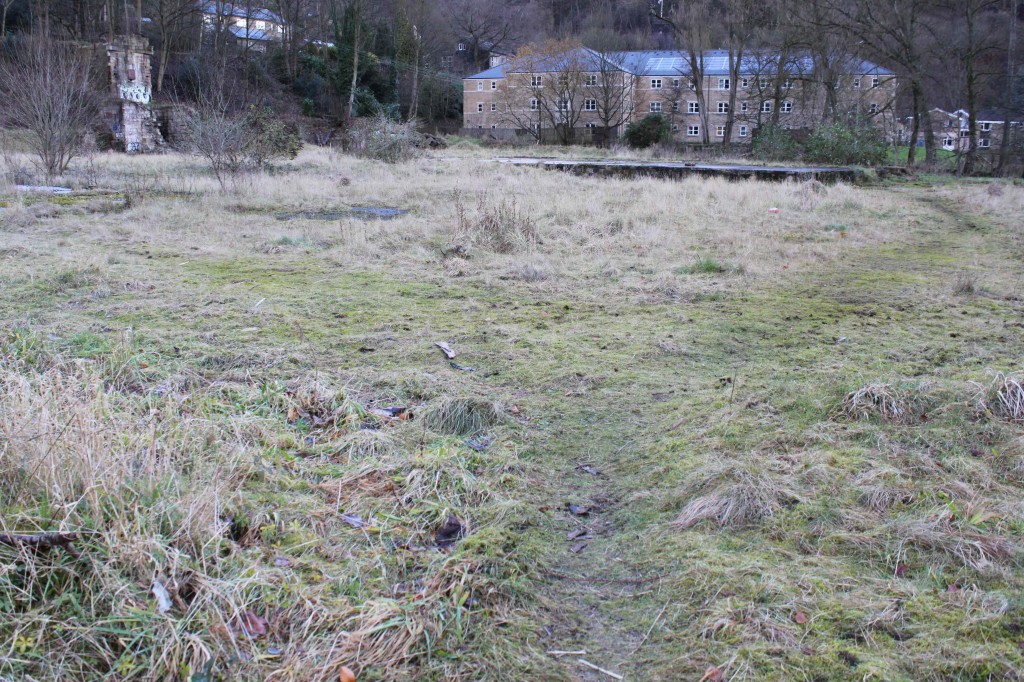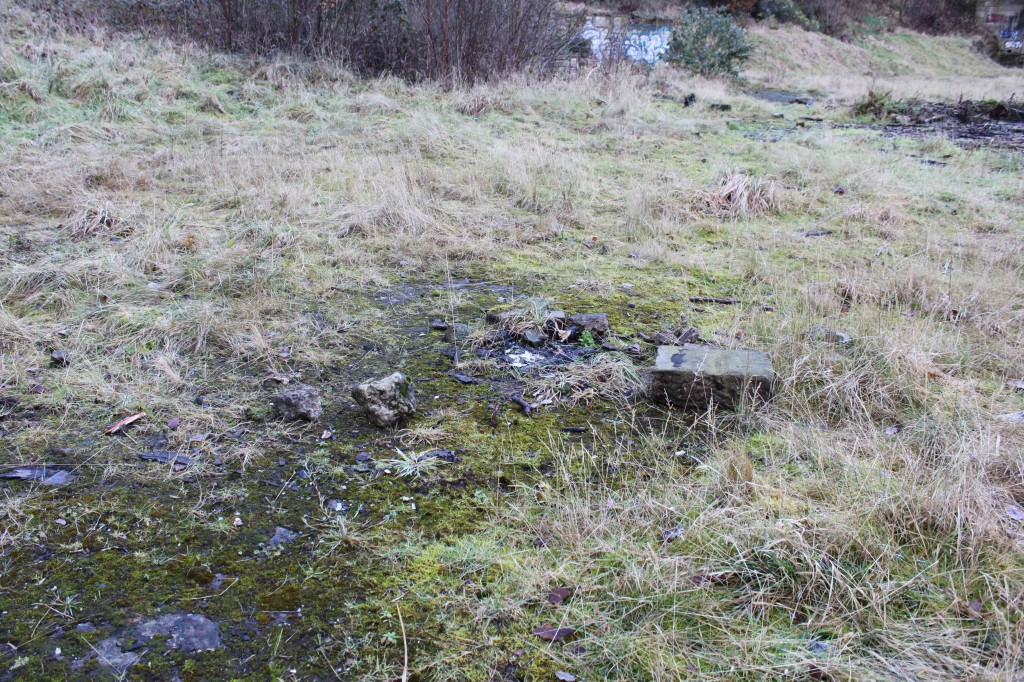How does Brown’s Site (the Mytholm Works site) contribute to the wellbeing of the community? Although some people characterise the site as an “eyesore”, many people in Mytholm talk about enjoying the way the field is home to a wide variety of wildlife- from bats, birds, bees and butterflies to deer. They also appreciate it as a green space that serves as a lung to help clear the air pollution created by traffic on Kings Road. Being close to the site provides a sense of wellbeing for the people who enjoy the wildlife and the breathing space.
A quick look at the field shows how many desire paths enter and cross it – paths made by people repeatedly walking where they like. So people clearly also value it as a space for walking. But with a prominent red-letter sign saying Danger Trespassers KEEP OUT, it’s going to be hard for people to say they enjoy being in Brown’s Field, and that this contributes to their wellbeing.
Photographs suggest that some of the people who’ve made the desire paths are children and teenagers who use the field as a kind of unofficial adventure playground: lighting and building small fires; using the hard surfaces for wheelie sports – maybe cycling, or skateboarding or inline skating; and painting graffiti and tag art on the walls.
All this may horrify some adults, but this is the kind of unsupervised, outdoor play in contact with nature that I and many in my (now older) generation enjoyed and that, all too often today, children and young people never experience. To their loss and detriment.
It seems to me that children’s and teenagers’ unsupervised play on Brown’s Field is to be celebrated, given that we live in a society where:
- only 21% of children regularly play outside, compared with 71% of their parents when they were children
- the area in which children may roam without supervision has decreased by almost 90% since 1970
- 11- to 15-year-olds in Britain now spend, on average, half their waking day in front of a screen
Learning Through Landscapes is an organisation dedicated to “transforming childhood, transforming landscapes”, by “creating stimulating outdoor learning and play experiences for children and young people.” So there’s a recognised need for safeguarding outdoor spaces for children to play in.
A 2010 Guardian article descibes growing evidence
“that it’s not so much what children know about nature that’s important, as what happens to them when they are in nature (and not just in it, but in it by themselves, without grownups). Respectable scientists – doctors, mental health experts, educationalists, sociologists – are beginning to suggest that when kids stop going out into the natural world to play, it can affect not just their development as individuals, but society as a whole.”
The idea of “nature deficit disorder” has emerged to describe what happens to our children and young people, growing up indoors, or in supervised activities, or in front of screens. The need to remedy this situation is borne out by the health and other benefits of time spent in free, unstructured play in the natural world – a free-range childhood.
Academic and scientific studies show that these benefits include mental wellbeing and self-esteem, as well as better problem-solving skills, focus and self-discipline. Socially, free-range play in the natural world improves cooperation, flexibility, and self-awareness. Emotional benefits include reduced aggression and increased happiness. In 2005 the American Medical Association published a study that concluded
“Children will be smarter, better able to get along with others, healthier and happier when they have regular opportunities for free and unstructured play in the out-of-doors.”
Studies also show that children’s games are more creative in green places than in concrete playgrounds and in the Ecology of Imagination in Childhood, Edith Cobb reviewed the biographies of 300 “geniuses”, and found they shared intense experiences of the natural world between the ages of 5 and 12.
This is not to say that the children and young people who play on Brown’s Field unofficial adventure playground are going to grow up to become geniuses – although, who knows? – but it bears out the idea that there is a strong connection between this kind of play and creativity in later life.
Geographer Marion Shoard has written that edgelands may be unloved or ignored by official planners and those who like landscapes that conform to ideas of the picturesque, but they provide rich habitats for a biodiverse range of plants and wildlfe, and valuable opportunities for young people’s unofficial adventure playgrounds, as well as other social benefits.
Ryedale Council has recognised these benefits in preserving a brownfield site (that used to be an airfield) as Clifton Backies nature reserve.
However, Calderdale Council does not recognise these benefits.
Updated 4 Dec to include information about Learning Through Landscapes







Pingback: A Starmer government would turn dreary wasteland into fast-tracked high density housing – Turning Calderdale Green